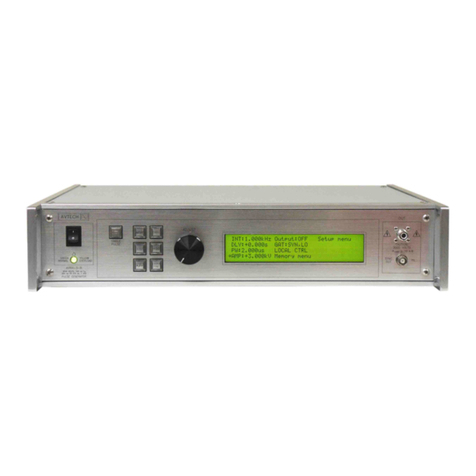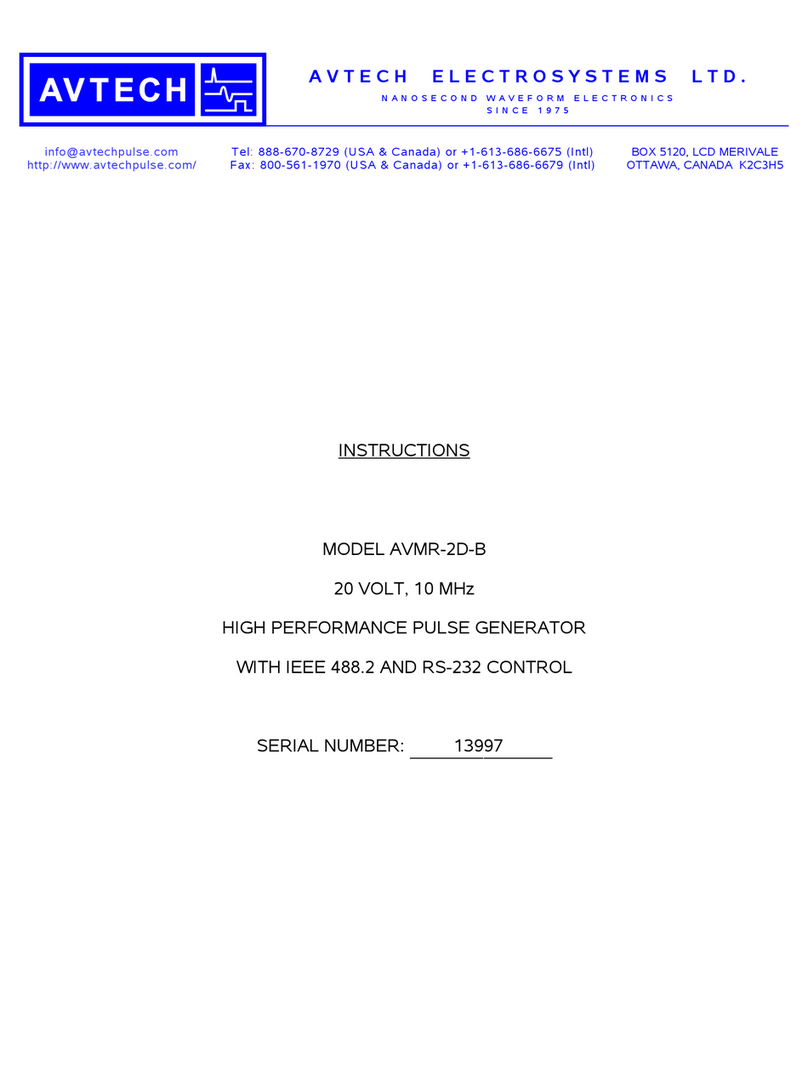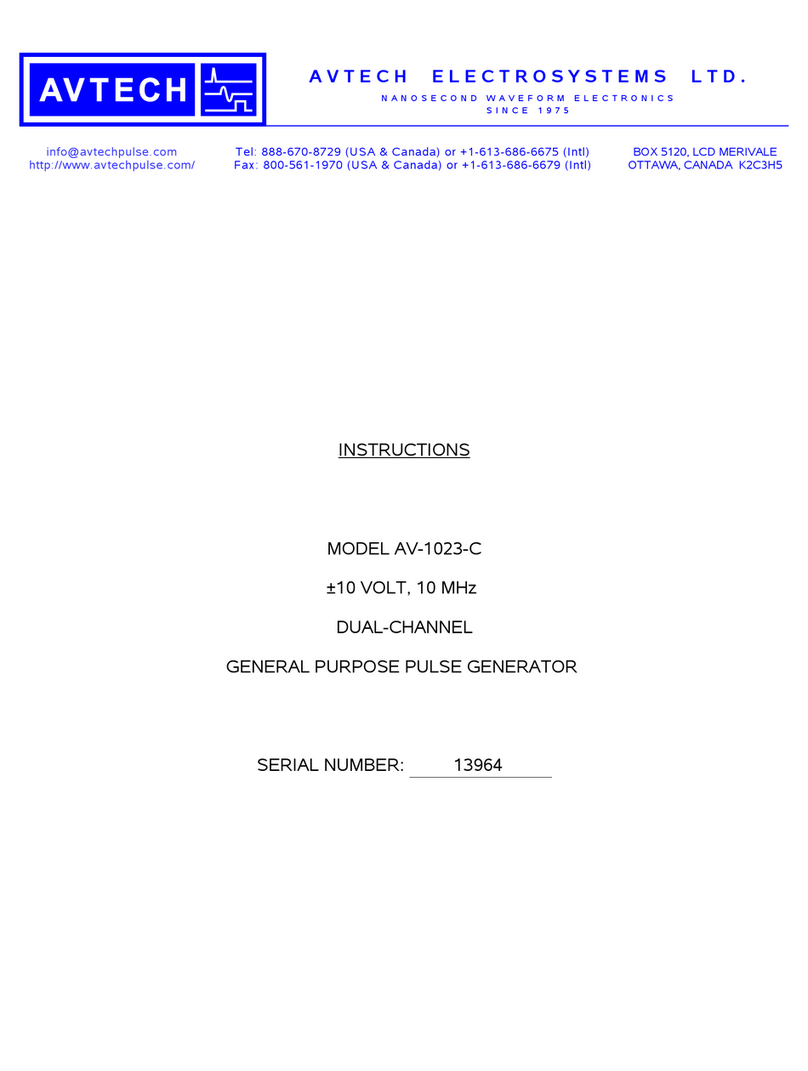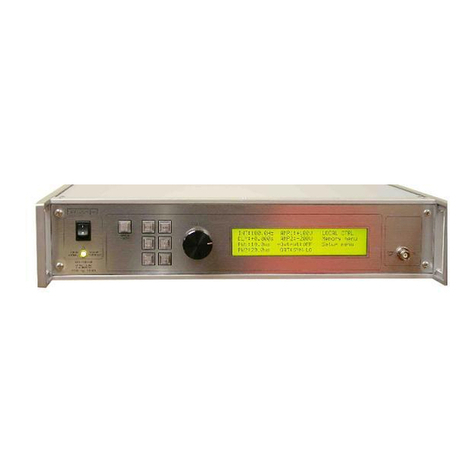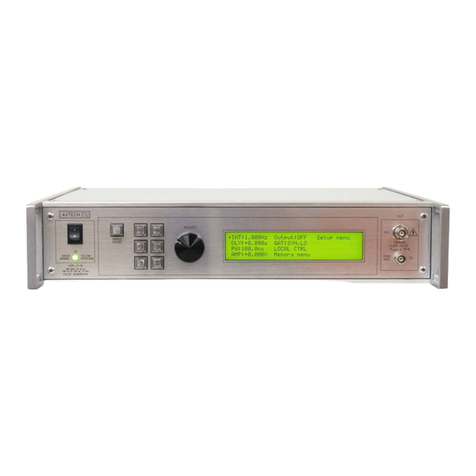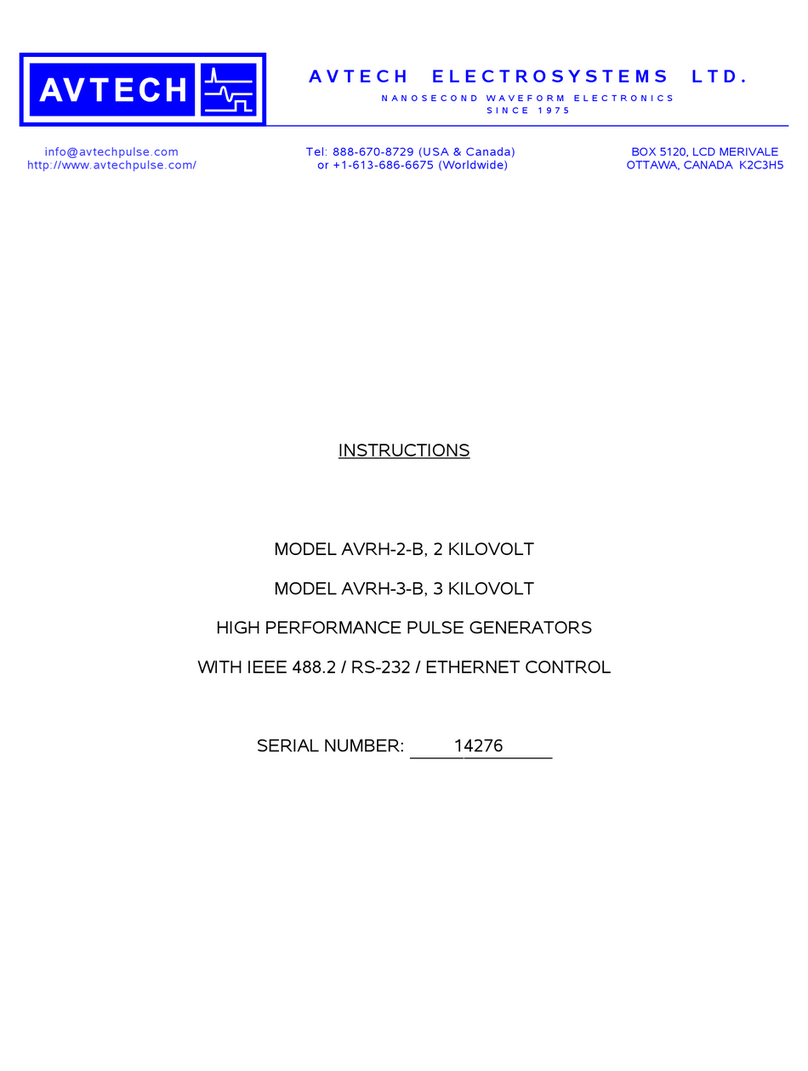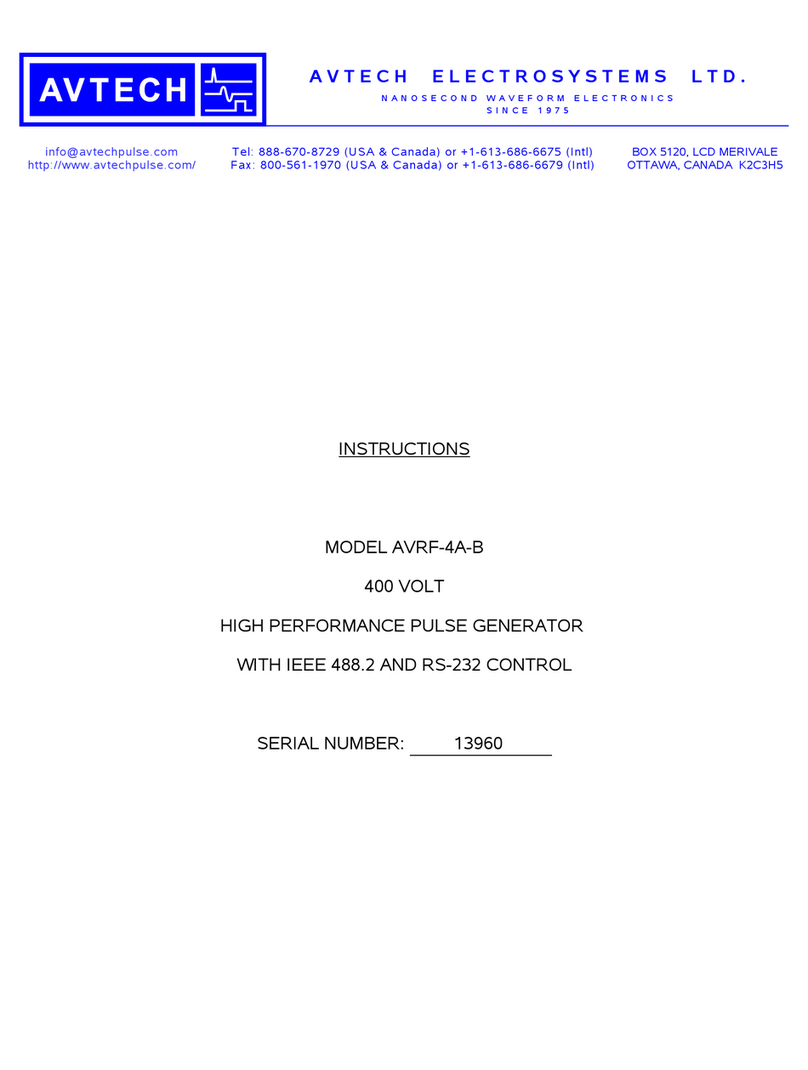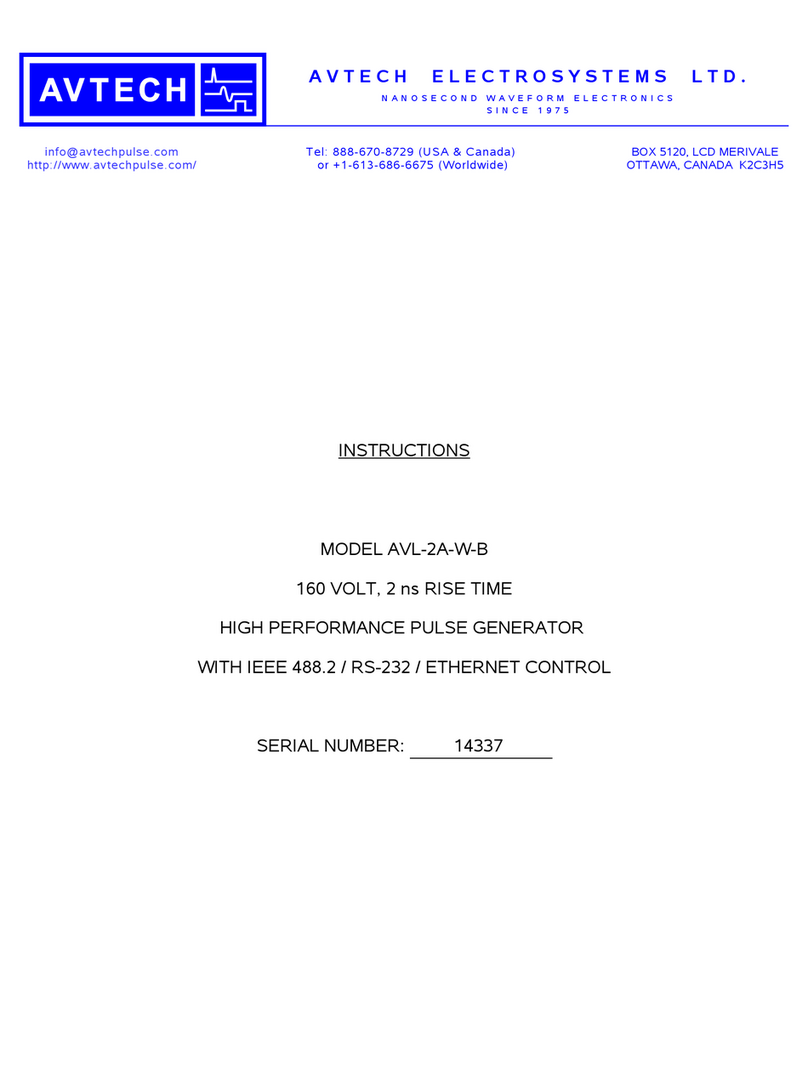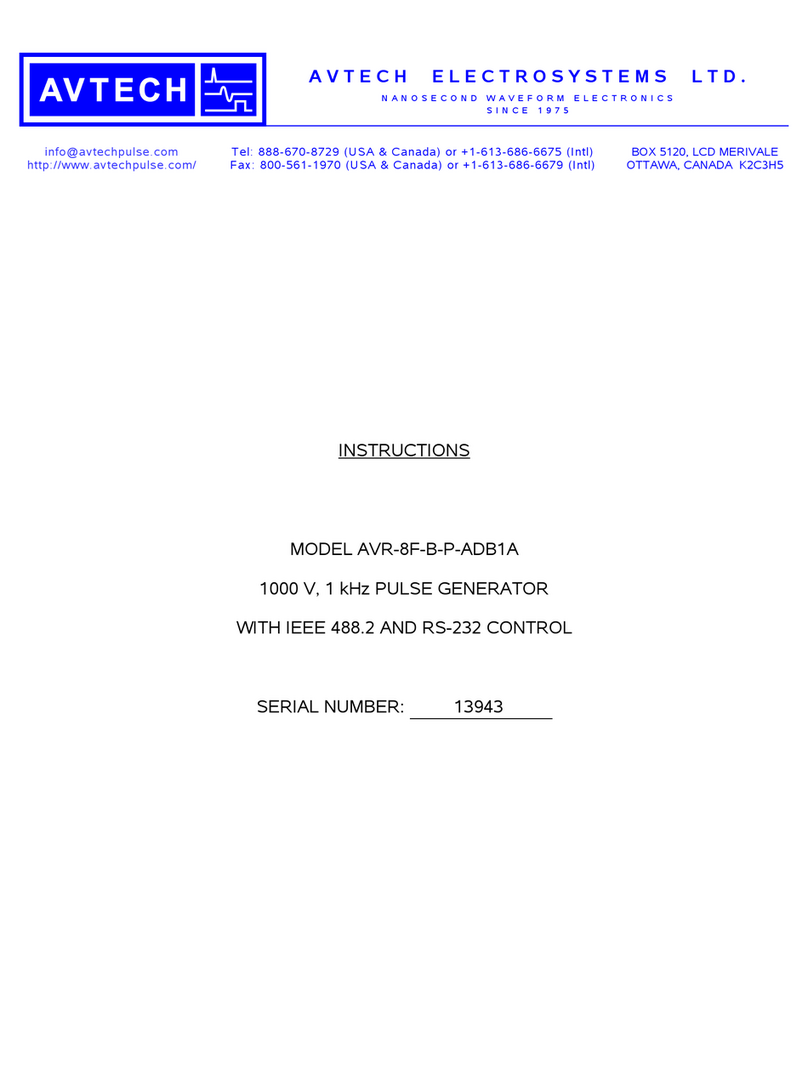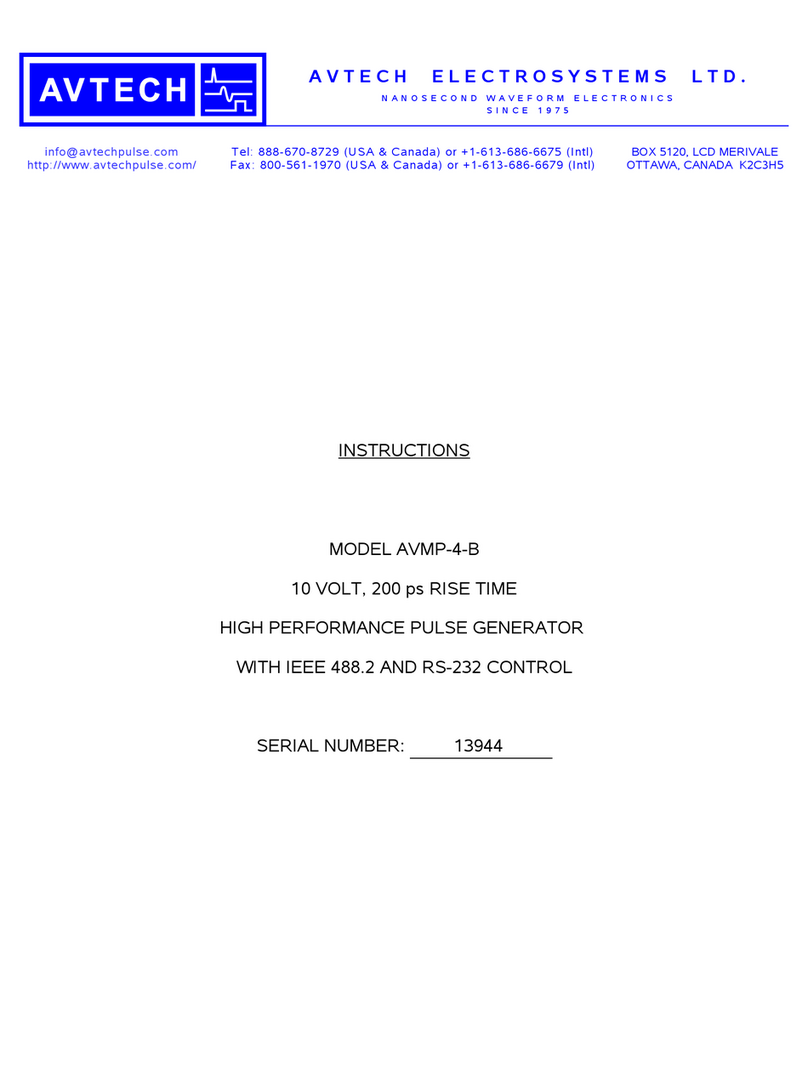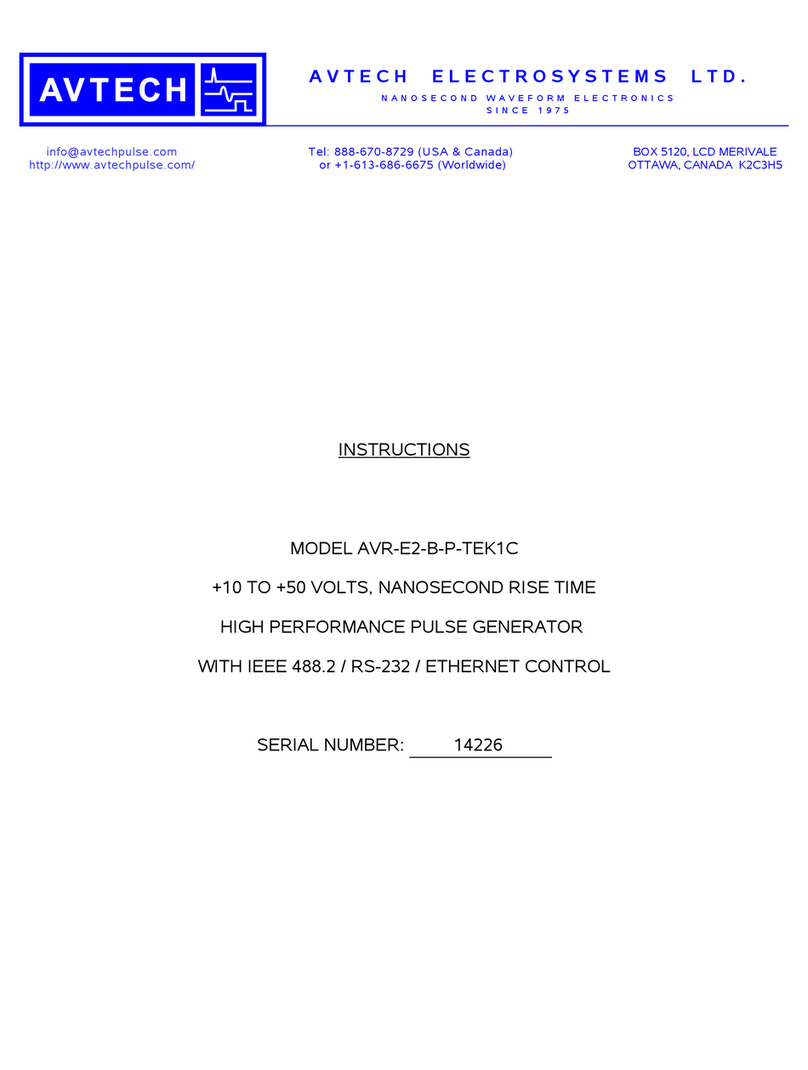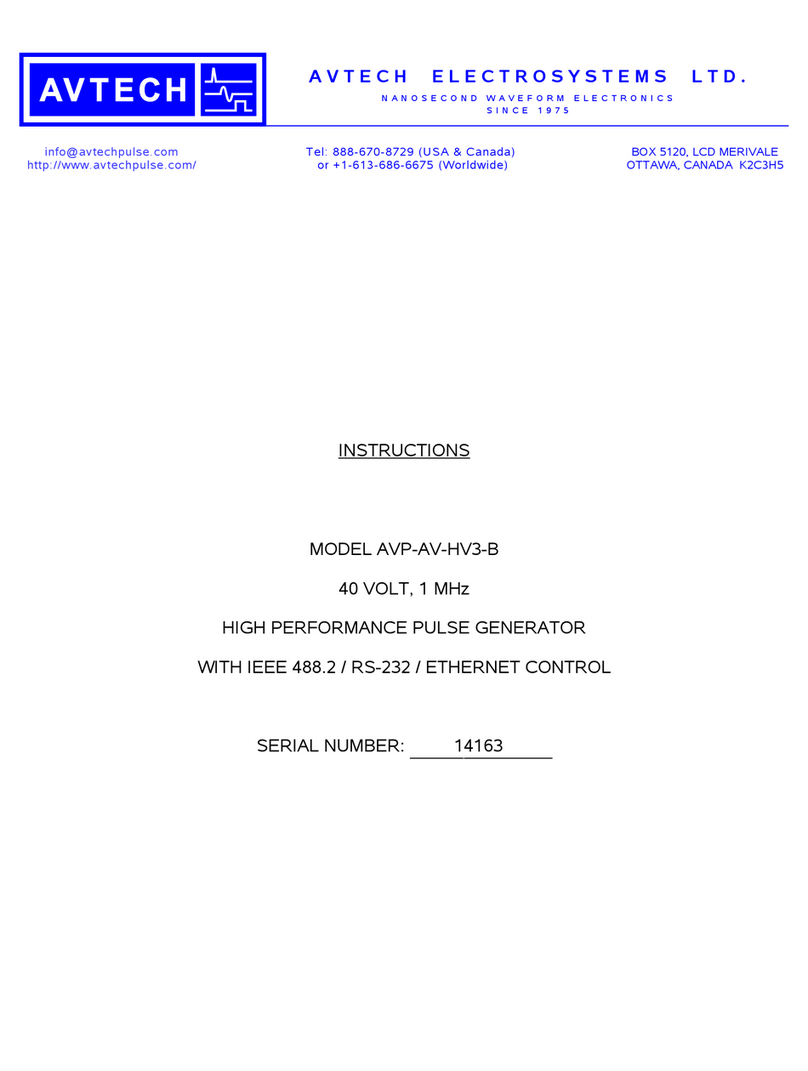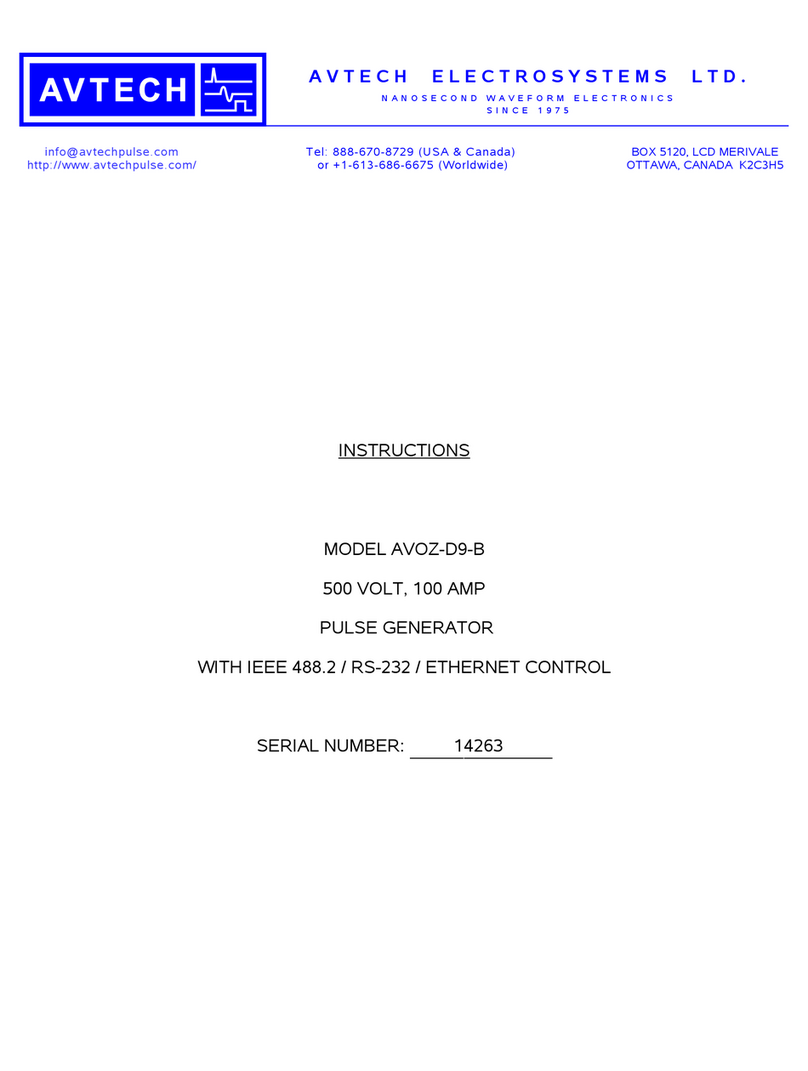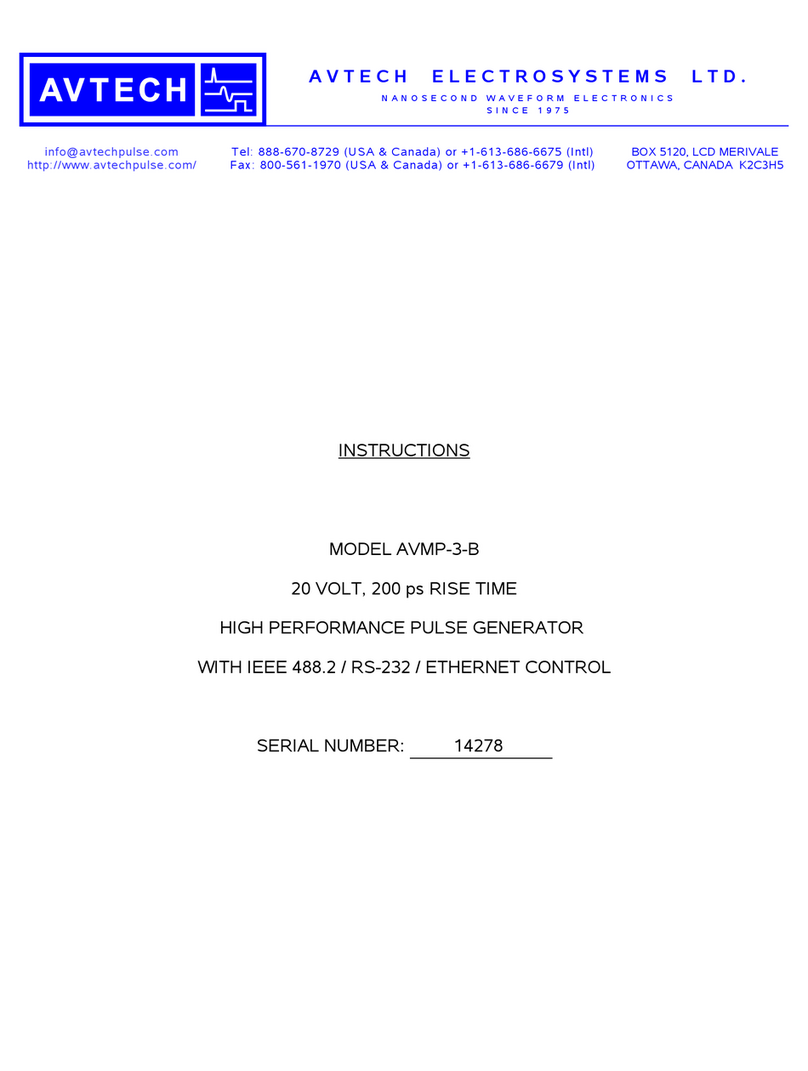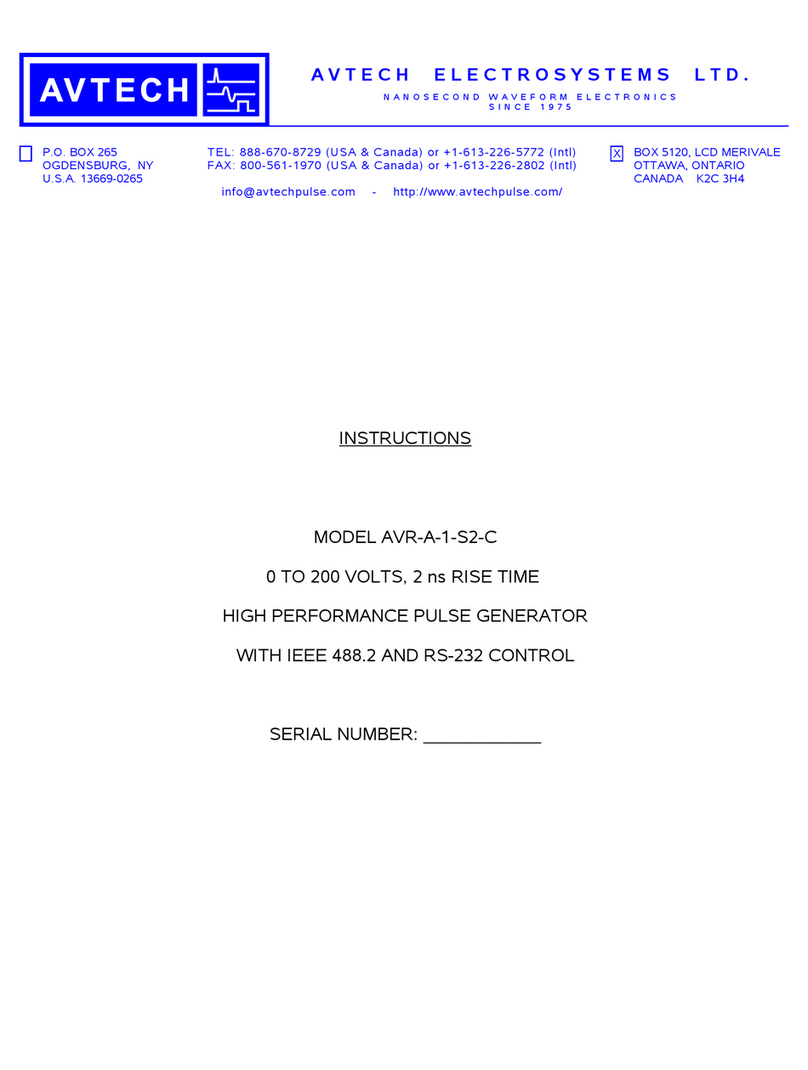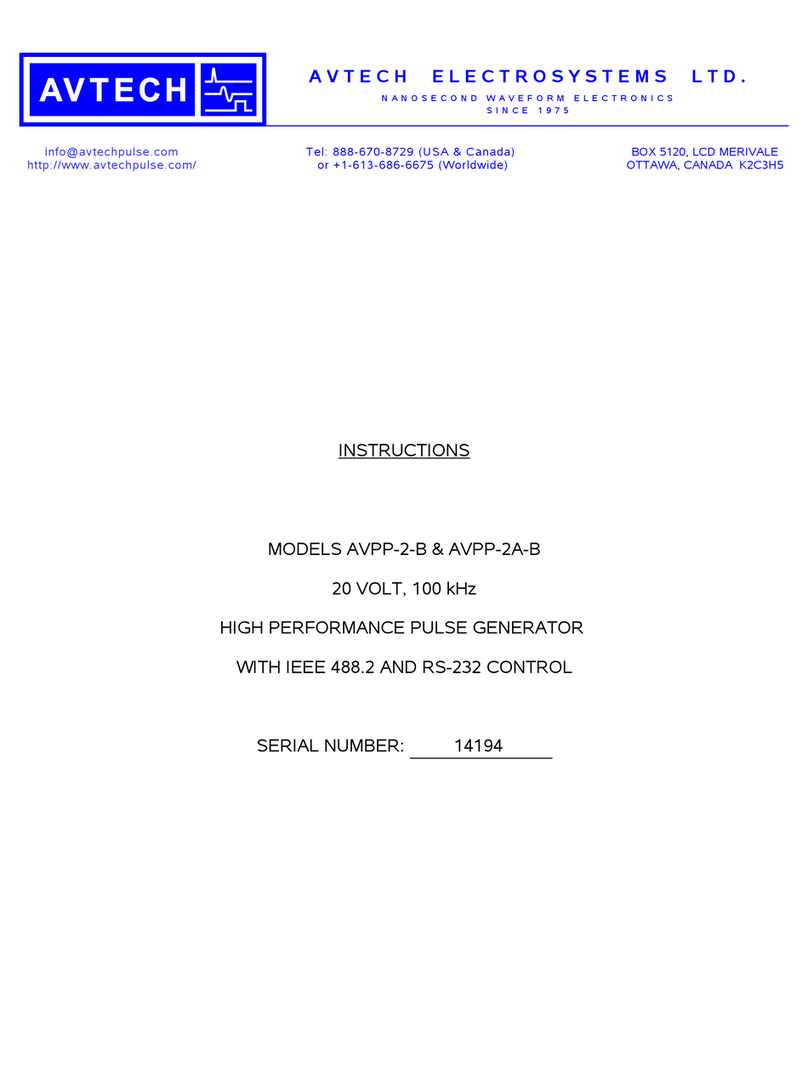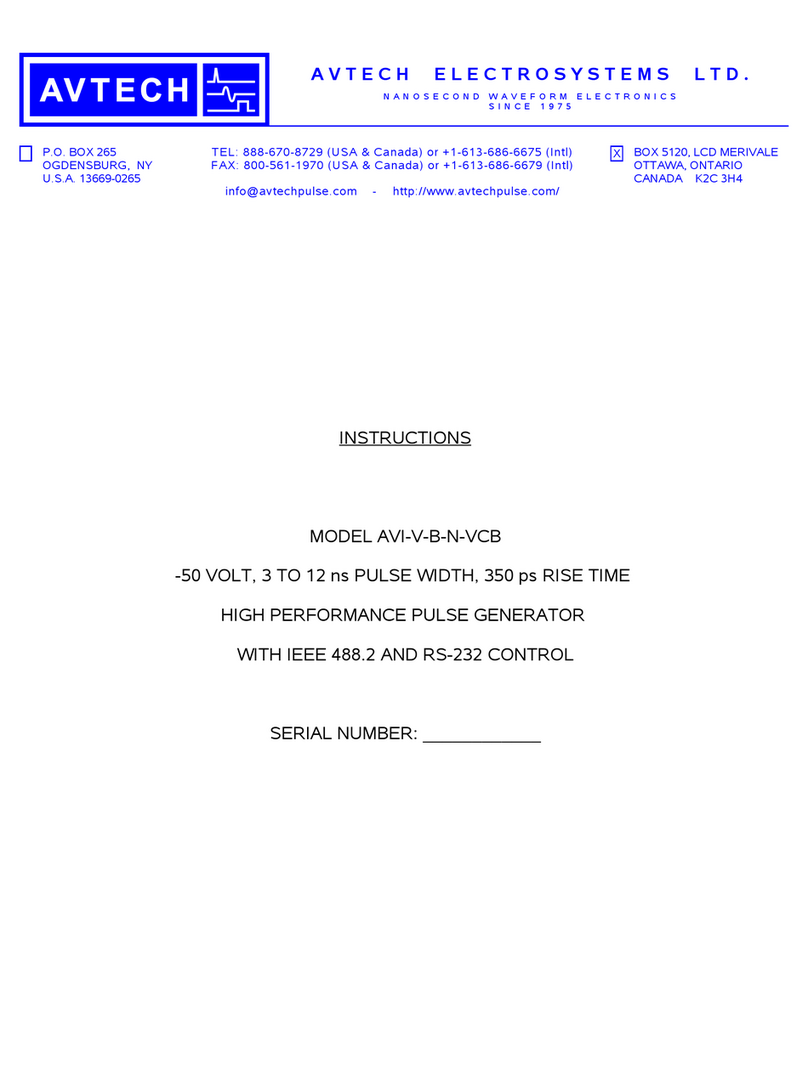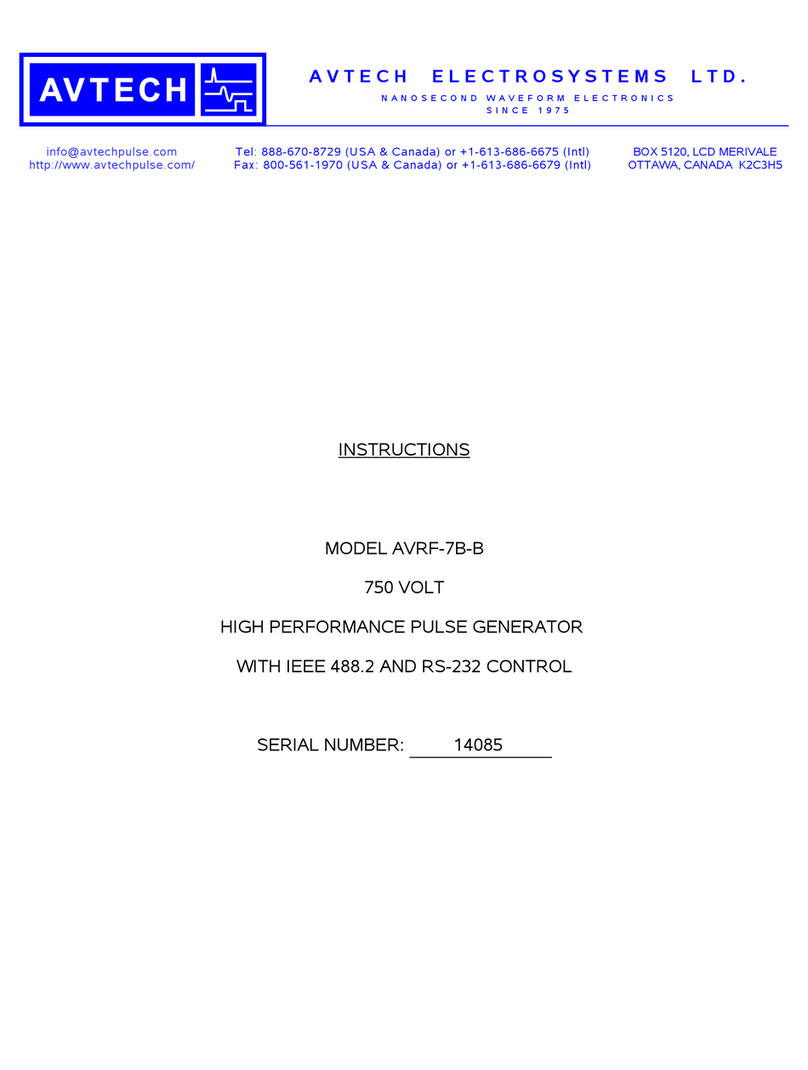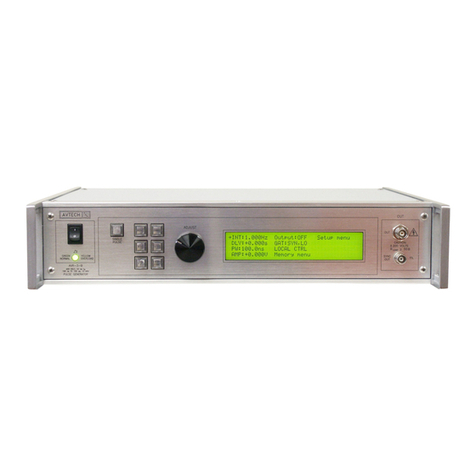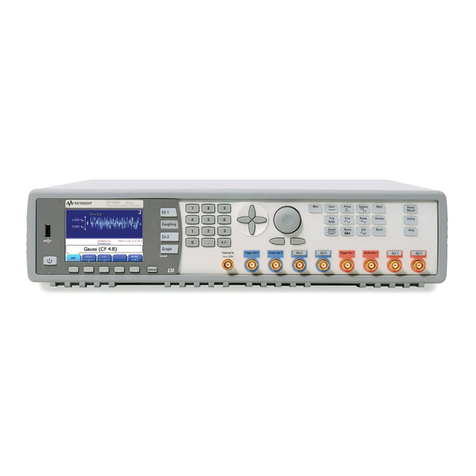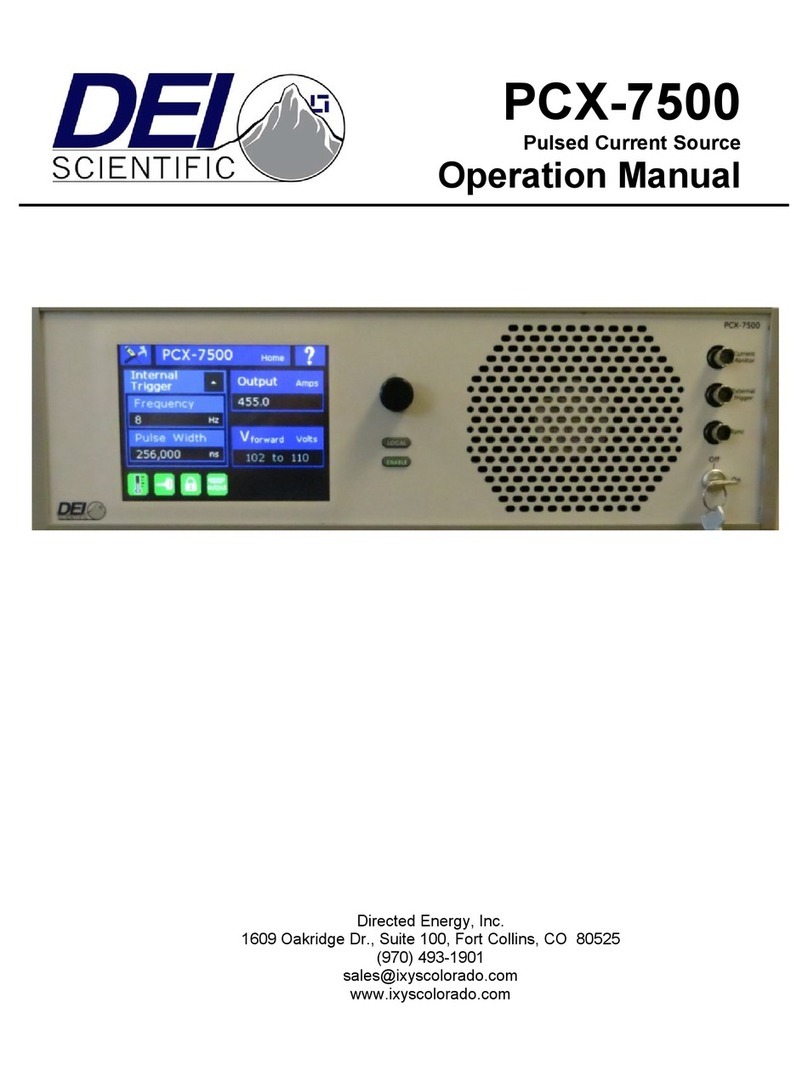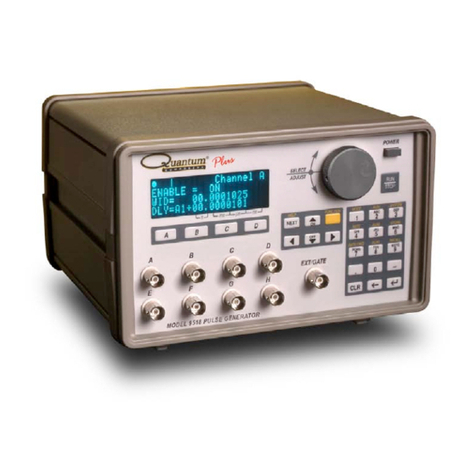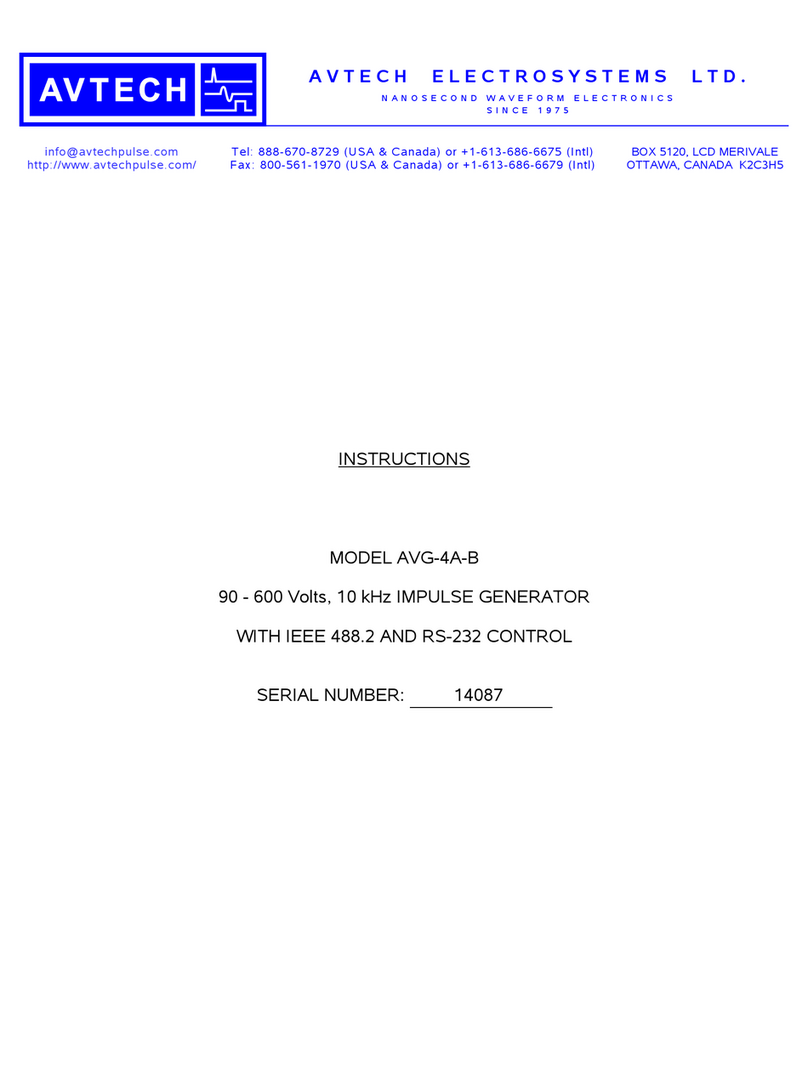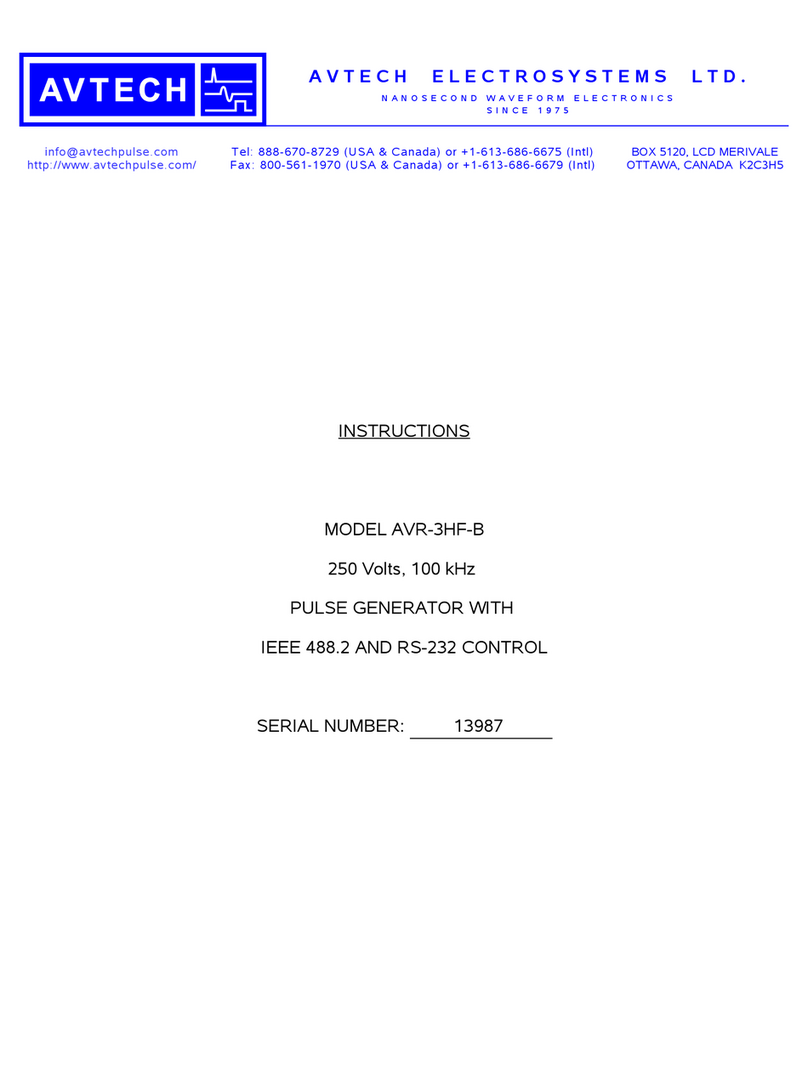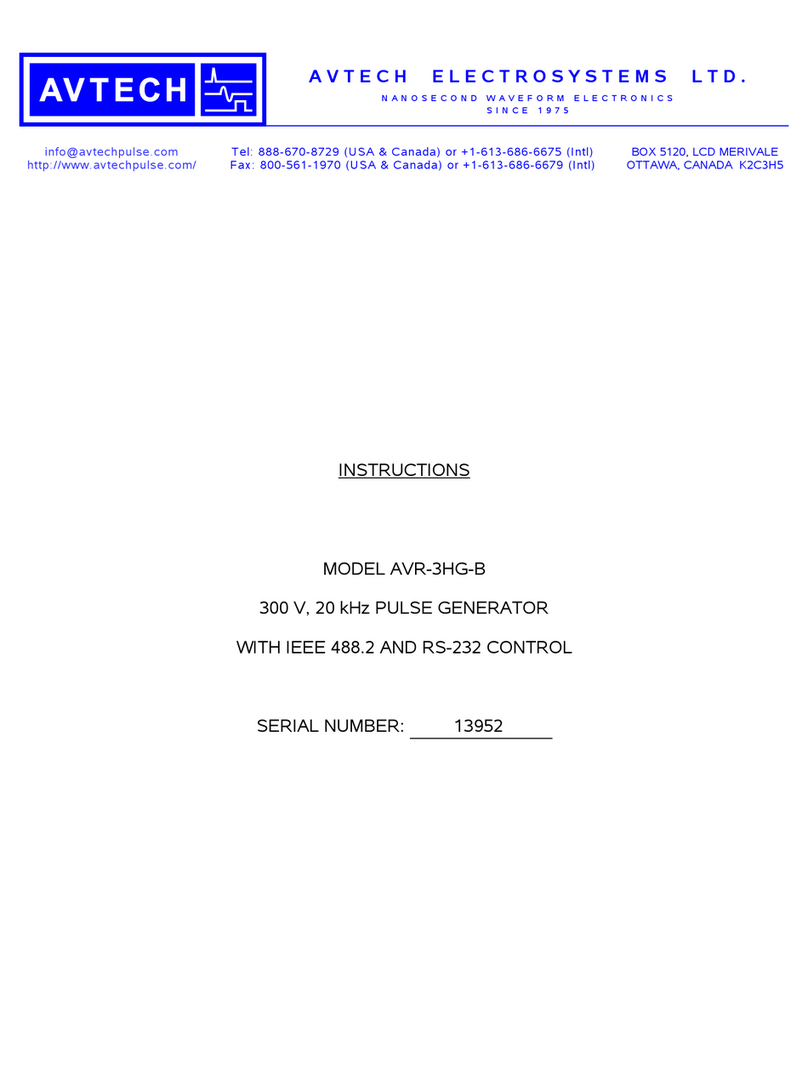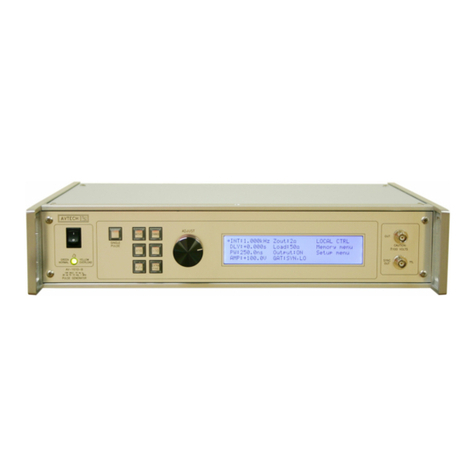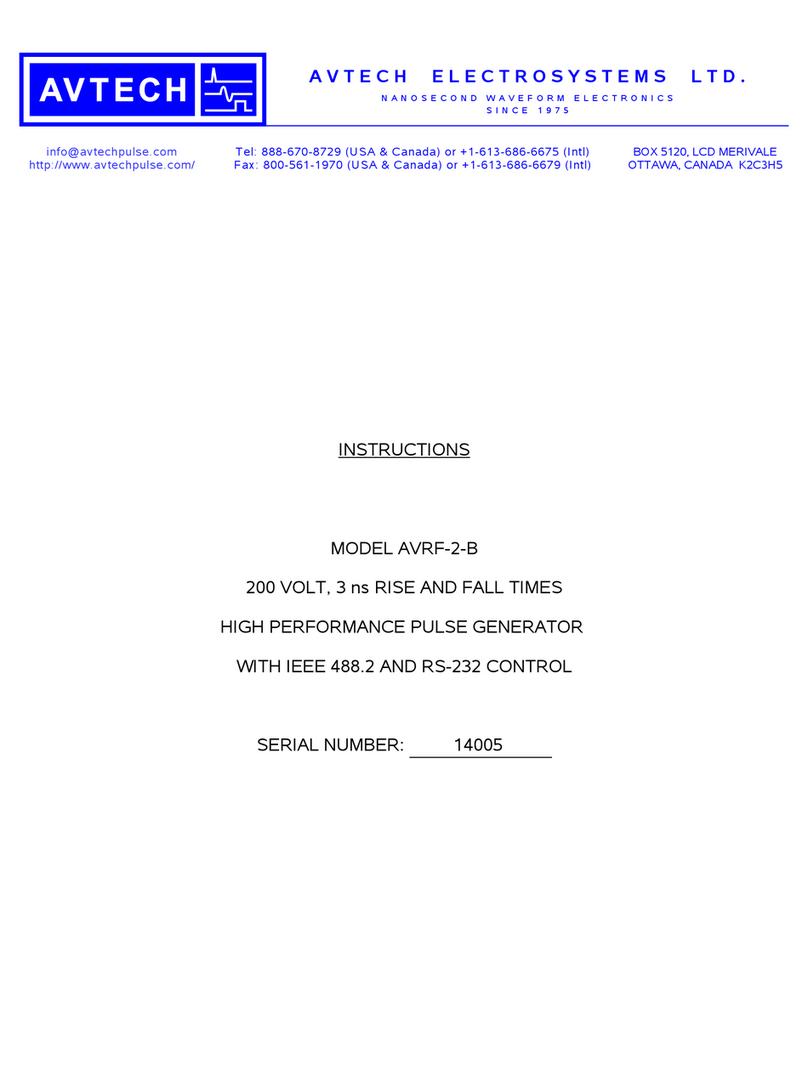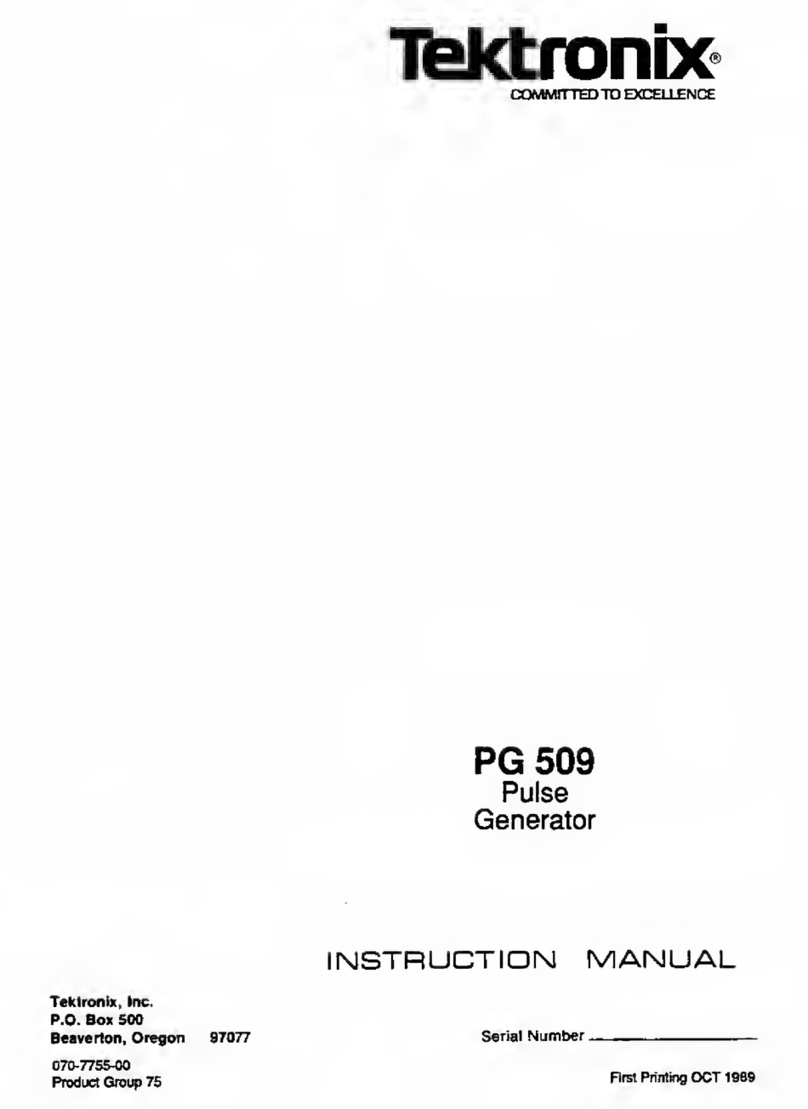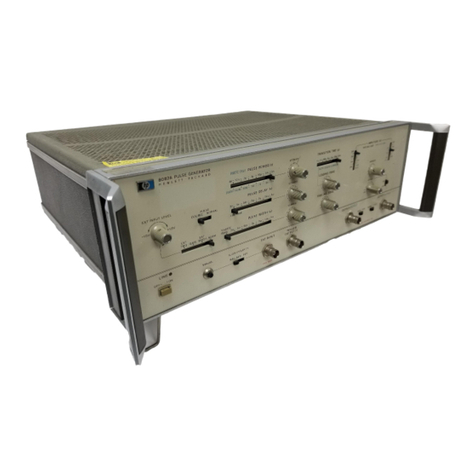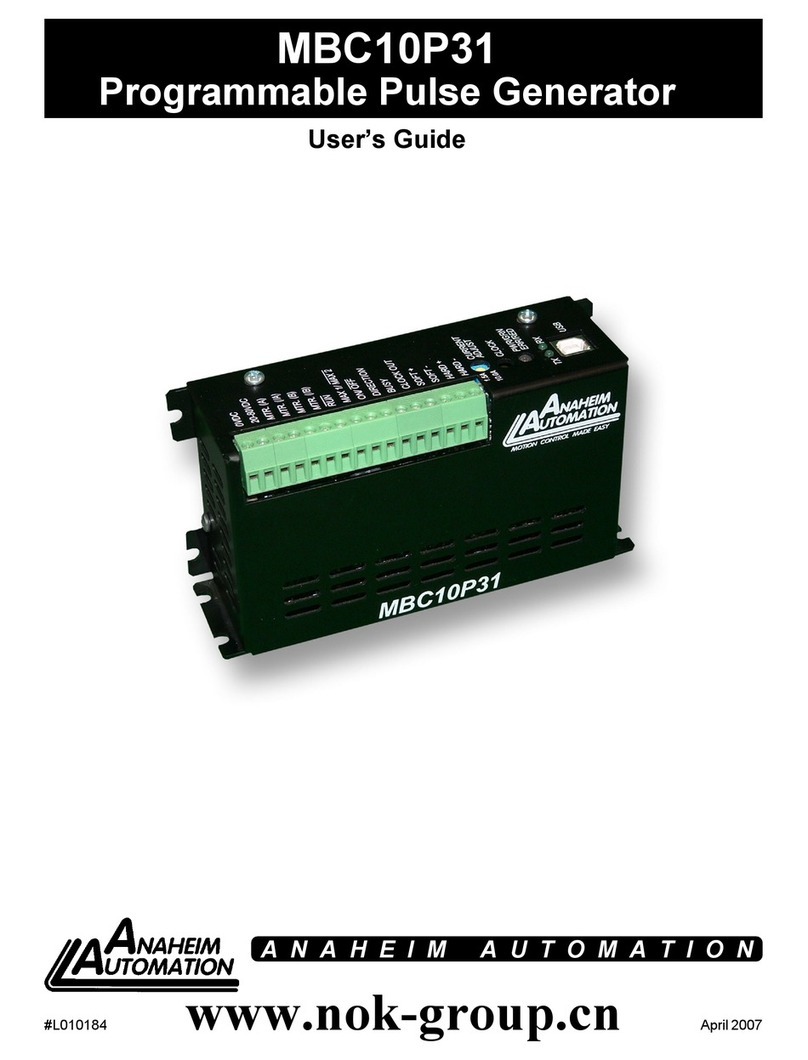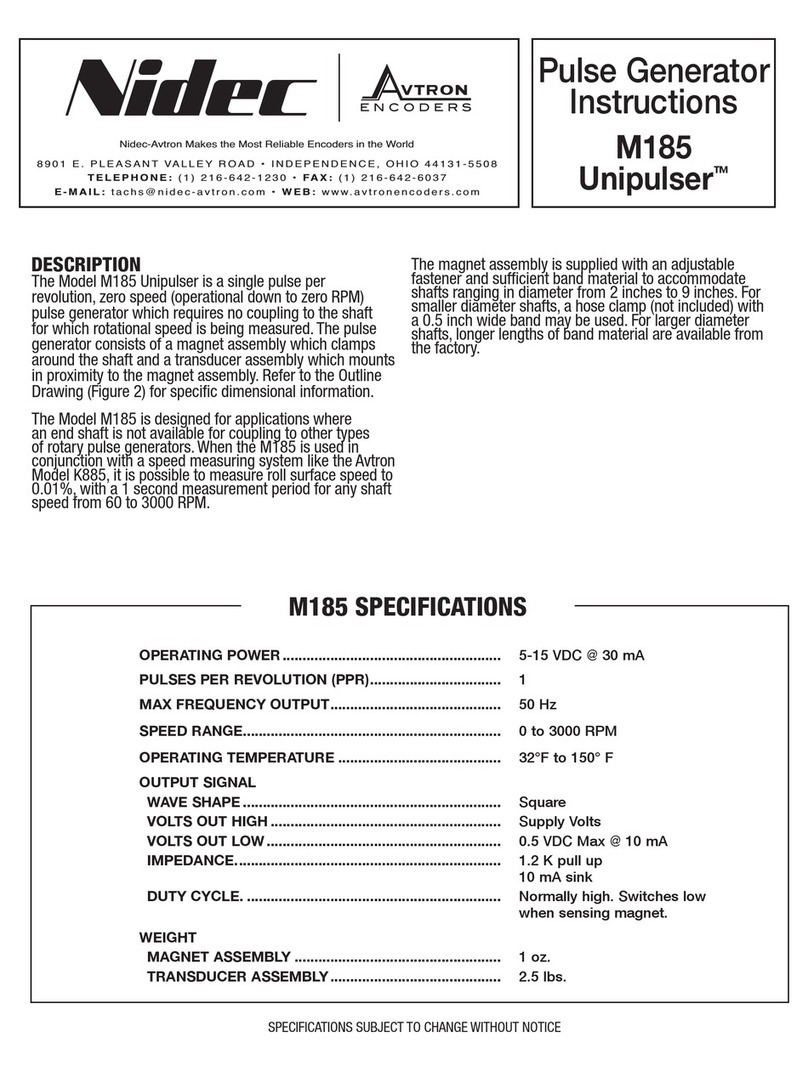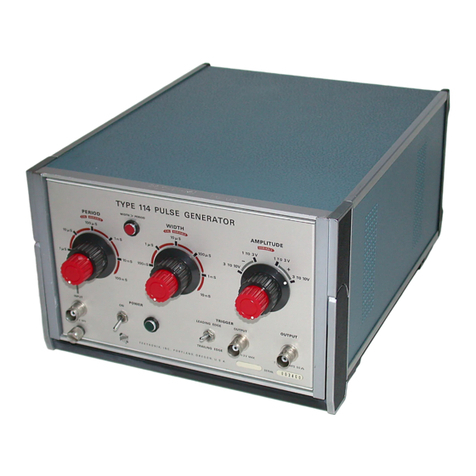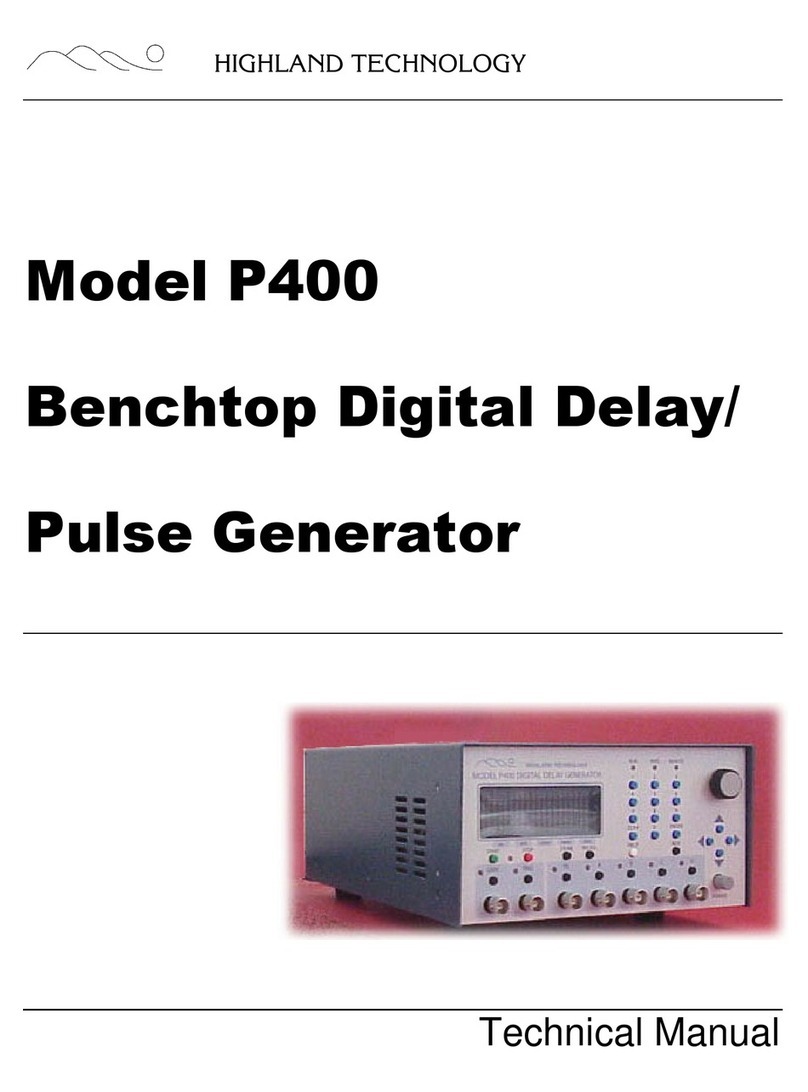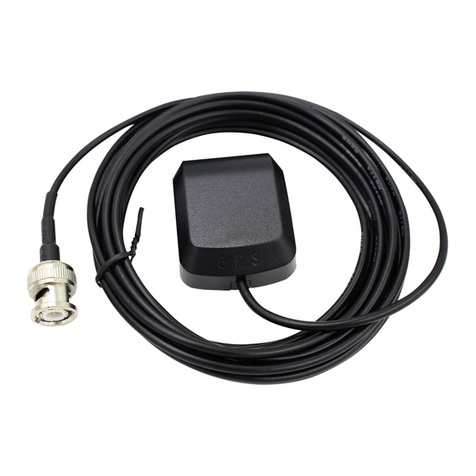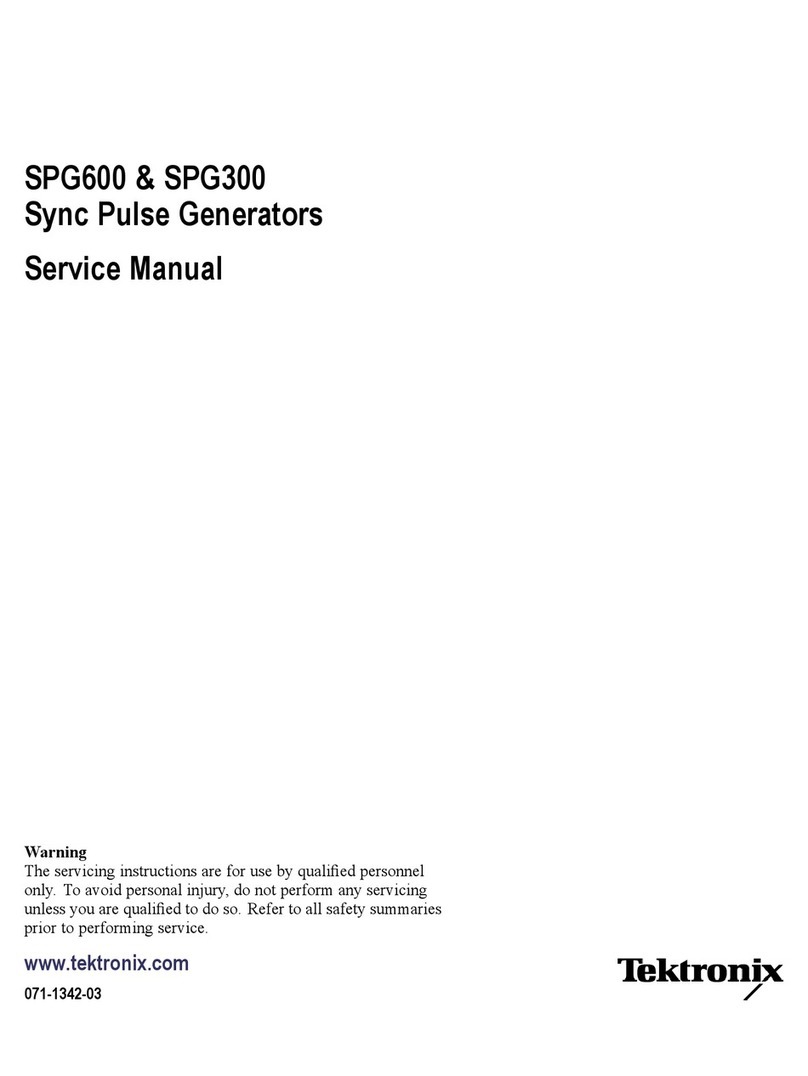SPECIFICATIONS
Model1: AVR-5B-B
Amplitude (VOUT)2,1 : < 20 to 500 Volts
Maximum output current: 10 Amps
Output resistance (in series with
output):
Standard: Nominally zero (< 2Ω)
Optional14: Nominally zero (< 2Ω), or 50Ω, switchable
Rise & fall times (20%-80%)
into RLOAD = 50Ω: ≤ 20 ns14
Pulse width (FWHM) : 100 ns to 100 us
PRF: external trigger mode:
internal trigger:
0 to 10 kHz
1 Hz to 10 kHz
Maximum duty cycle (DCMAX), and
maximum average output power
(PMAX)16:
DCMAX, PMAX
Standard: 1%, 50W
-XP1 opt: 2%, 100W
-XP2 opt: 4%, 200W
Maximum droop at maximum pulse
width, into 50Ω12:4%
Amplitude discharge time constant,
τDIS (typical)9:2 seconds
Minimum time between full
discharges of the HV PS10:10 seconds
Amplitude charge-up time11: < 8 seconds
Polarity4: Positive or negative or both (specify -P, -N, or -PN).
Dual polarity not available with -XP2 option.
GPIB and RS-2 2 control: Standard on -B units. See http://www.avtechpulse.com/gpib for more information.
LabView Drivers: Available at http://www.avtechpulse.com/labview.
Ethernet port, for remote control
using VXI-11. , ssh, telnet, web:
Included. Recommended as a modern alternative to GPIB / RS-2 2.
See http://www.avtechpulse.com/options/vxi for details.
Settings resolution: The resolution of the timing parameters (pulse width, delay, period) varies, but is always better than
0.15% of (|set value| + 20 ns). The amplitude resolution is < 0.1% of the maximum amplitude.
Settings accuracy (into 50Ω): Typically ± % (plus ±1V or ± 2 ns) after 10 minute warmup. For high-accuracy applications
requiring traceable calibration, verify the output parameters with a calibrated oscilloscope15.
Propagation delay: ≤ 200 ns (Ext trig in to pulse out)
Jitter (Ext trig in to pulse out): ± 100 ps ± 0.0 % of sync delay
Trigger modes: Internal trigger, external trigger (TTL level pulse, > 10 ns, 1 kΩ input impedance), front-panel “Single
Pulse” pushbutton, or single pulse trigger via computer command. In the external trigger mode, the
pulse width may be set by the instrument, or it may be set to track the input pulse width.
Variable delay: Sync to main out: 0 to 1.0 seconds, for all trigger modes (including external trigger).
Sync output: > + Volts, > 50 ns, will drive 50 Ohm loads
Gated operation: Synchronous or asynchronous, active high or low, switchable. Suppresses triggering when active.
Connectors: OUT: N5,6. Trig, Sync, Gate: BNC
Power requirements: 100 - 240 Volts, 50 - 60 Hz
Dimensions (H x W x D): 100 mm x 4 0 mm x 75 mm ( .9” x 17” x 14.8”)
Chassis material: cast aluminum frame and handles, blue vinyl on aluminum cover plates
Temperature range: +5°C to +40°C
1) -B suffix indicates GPIB-equipped model.
2) For operation at amplitudes of less than 10% of full-scale, best results will be obtained by setting the amplitude near full-scale and using external
attenuators on the output.
) The output pulse width may also be controlled externally by applying a TTL-level trigger of the desired width to a rear-panel BNC connector (PWIN =
PWOUT mode).
4) Indicate desired polarity by suffixing the model number with -P or -N (i.e. positive or negative) or -PN for dual polarity option.
5) SHV, MHV or HN output connectors can also be provided. To specify, suffix the model number with -SHV, -MHV or -HN as required.
6) An N-male to BNC-female adapter (Amphenol P/N 1-216) is available. Add the suffix -ADPT2 to the model number to order this adapter.
7) An adapter kit, consisting of an SHV PLUG to MHV FEMALE adapter and an MHV MALE to BNC FEMALE adapter, is available. Add the suffix -
ADPT1 to the model number to order this kit.
8) MHV, N or HN output connectors can also be provided. To specify, suffix the model number with -MHV, -NC or -HN as required.
9) The output amplitude is controlled by internal high-voltage DC power supplies. When the amplitude setting is reduced, the high voltage decays in an
exponential fashion, with the typical time constant noted in this specification. The -QD option provides a fast active-discharge circuit.
10)More frequent discharges will cause the instrument to overheat, and may cause damage.
